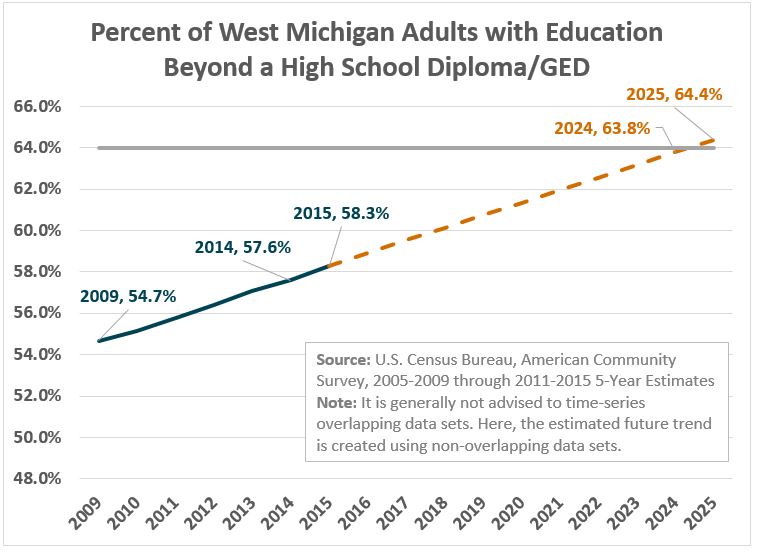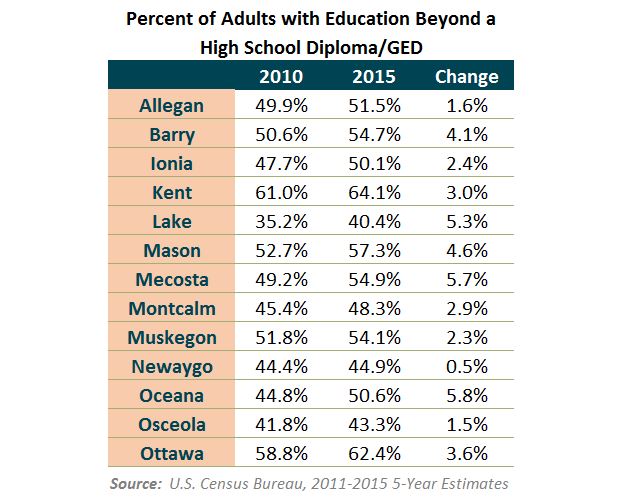Increase in degrees and credentials edges West Michigan closer to stated goals
One of the top-line metrics Talent 2025 has adopted to measure the quantity and quality of talent in West Michigan is the proportion of adults with education beyond a high school diploma (this includes for-credit and not-for-credit certificates, as well as 2-year, 4-year, and advanced degrees). According to a report from the W.E. Upjohn Institute, West Michigan is forecasted to need 64 percent of workers having education beyond high school by the year 2025. This has been a guiding vision for our organization.
On December 8th, new data from the American Community Survey was released for the 2011-2015 5-year estimates. According to this new dataset, 58.3 percent of adults in West Michigan have education beyond a high school diploma or equivalent. This is an increase of 3.1 percentage points from 2010, when 55.2 percent of adults were at this level of education. With this rate of increase, the region could expect 61.3 percent of adults to have education beyond high school by 2020, and 64.4 percent of adults by 2025.

Educational attainment varies by county
Of course, there is still much variation between the thirteen counties that make up the region, and although every county in West Michigan has seen this education marker move up since 2010, gains have been unequal. Kent County, the most highly educated by these standards, increased to 64.1 percent in 2015 from 61.0 percent in 2010. Ottawa County, not far behind, saw a 3.6 percentage point increase to 62.4 percent in 2015 from 58.8 percent in 2010. Lake County adults with education beyond high school made up 40.4 percent of the adult population. However, this was a 5.3 percentage point increase over the last five years. Osceola County made a smaller 1.5 percentage point gain to 43.3 percent in 2015 from 41.8 percent in 2010.
The ability of the region to attract, retain, and develop highly-skilled talent is one of the most important goals of Talent 2025. Individuals with higher levels of education see higher wages and lower unemployment on a national level.

Want to learn more?
Educational attainment is one of Talent 2025’s success metrics. If you’d like to see everything we’re tracking about the region, check out our dashboard here.


